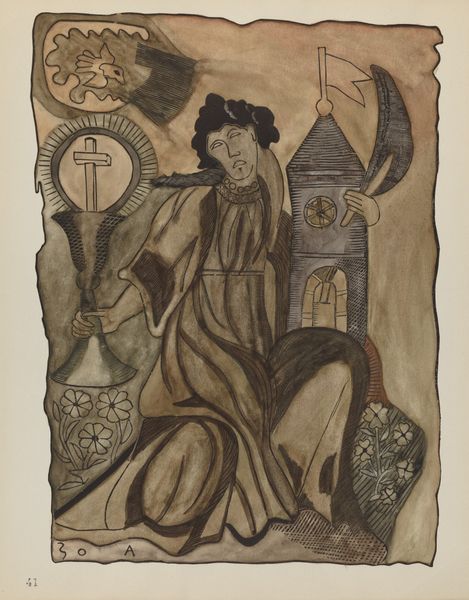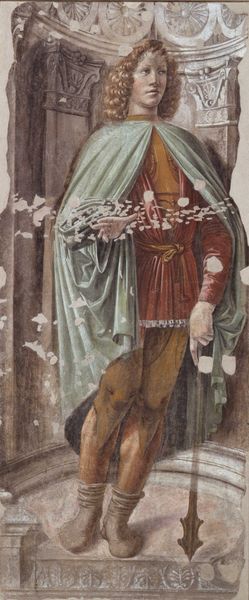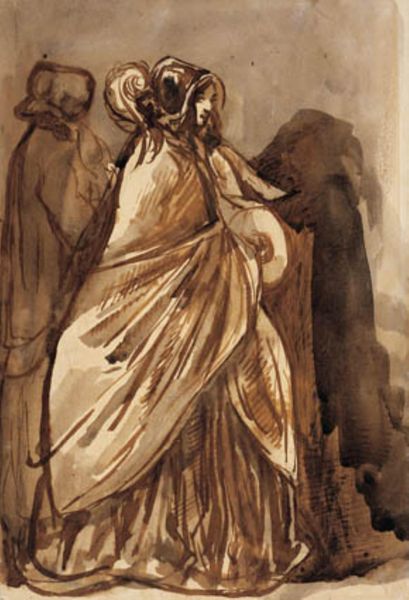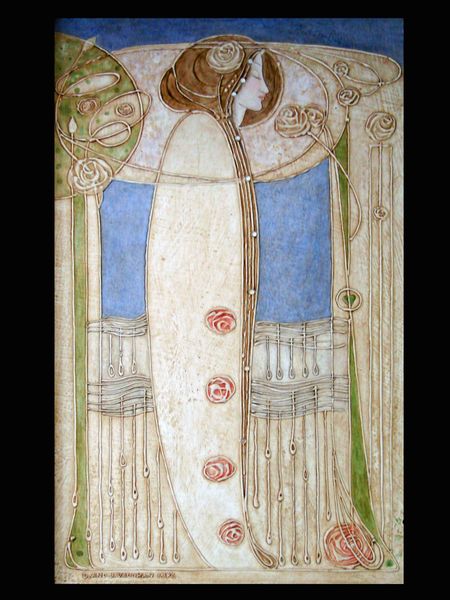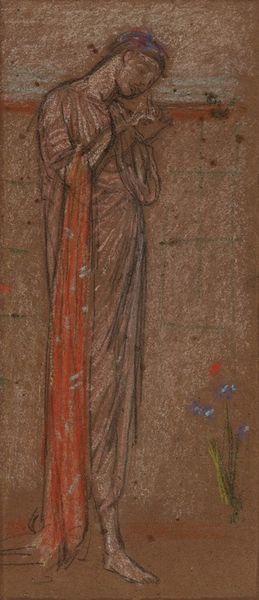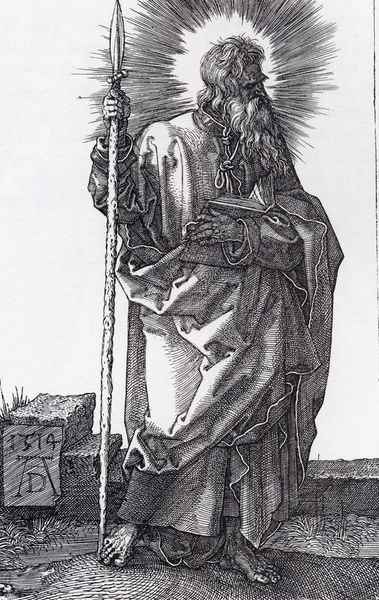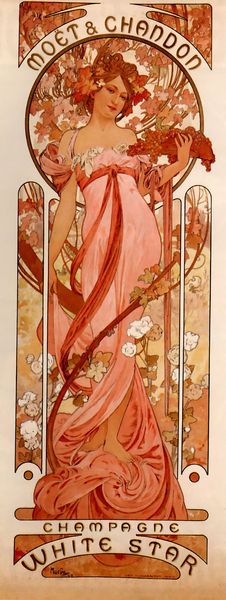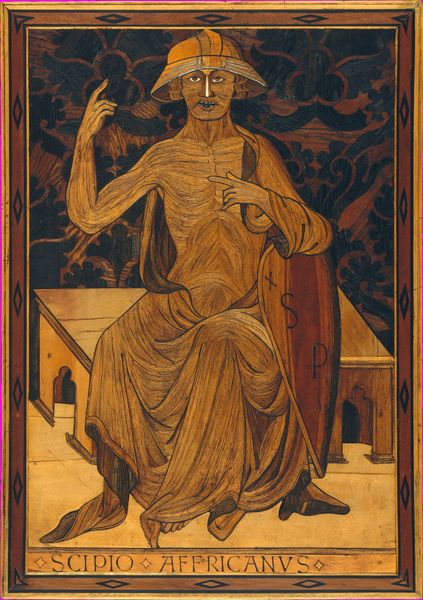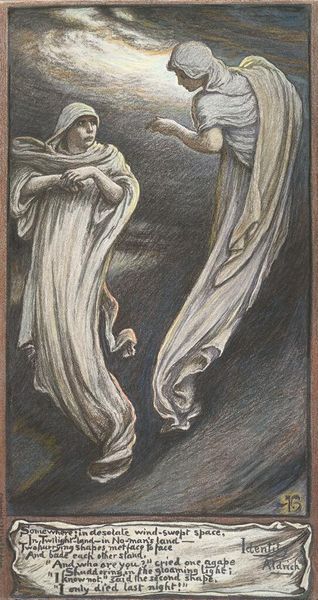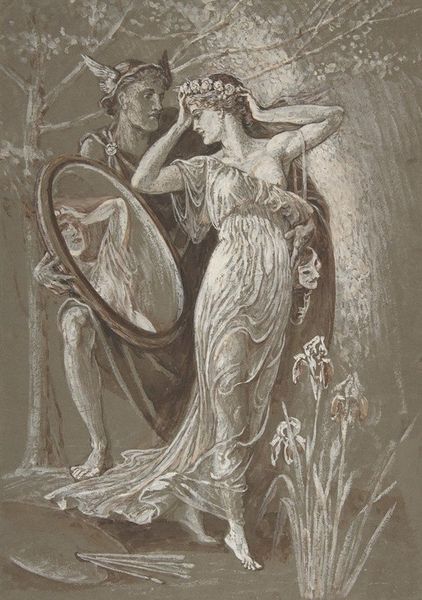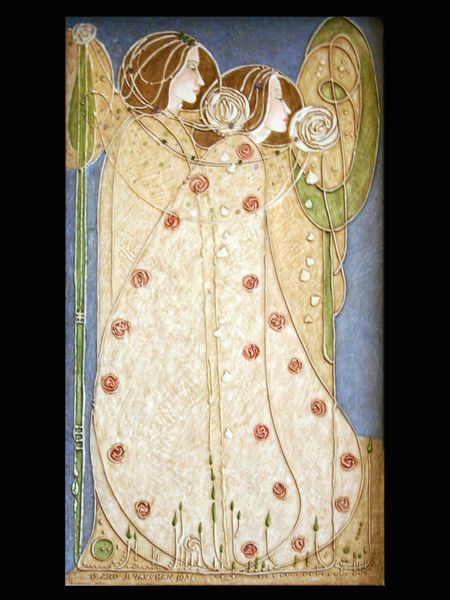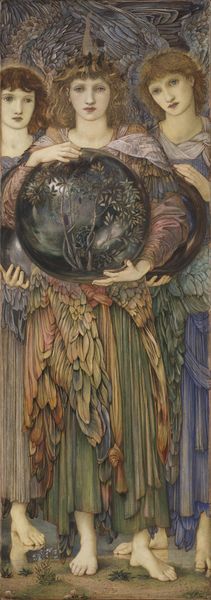
Copyright: Public domain
Editor: Here we have Edward Burne-Jones’ “Gudrun Setting Fire to Atli’s Palace” from 1897. It looks like it’s tempera on, perhaps, paper? The whole scene has this hushed, almost dreamlike quality. What do you see in this piece, especially in terms of its romantic elements? Curator: It’s that simmering, stylized rage, isn't it? Burne-Jones, steeped in the Pre-Raphaelite movement and deeply involved with romanticism, always managed to find this extraordinary stillness in moments of extreme drama. He was fascinated, of course, by mythology. Have you encountered the Volsunga Saga? It seems so relevant here! Editor: Vaguely. Isn’t that Norse? I know bits and pieces... So Gudrun is seeking revenge, then? Curator: Absolutely. A potent act of vengeance for her brothers. What strikes me most, looking at Gudrun herself, is her utter lack of...glee. The cool palette emphasizes the steely resolve, almost as if she's detached from the act. More like destiny unfolding than personal revenge, perhaps. She becomes an instrument of fate! Editor: I never thought about that! So, she isn't just angry; she’s fulfilling some kind of higher purpose. Curator: Precisely! What do you think about the flame styling itself? So quiet...not at all 'raging inferno'. Is Burne-Jones muting passion and glorifying a calculated course of action instead? Editor: That’s wild to consider. Maybe it suggests the Pre-Raphaelites valued control even within these big emotional scenes? Curator: Maybe. Anyway, Burne-Jones is a complex master to unravel; perhaps that's why this small image continues to inspire inquiry so much. Editor: It definitely gave me a fresh perspective! I’ll have to read the Volsunga Saga now!
Comments
No comments
Be the first to comment and join the conversation on the ultimate creative platform.

